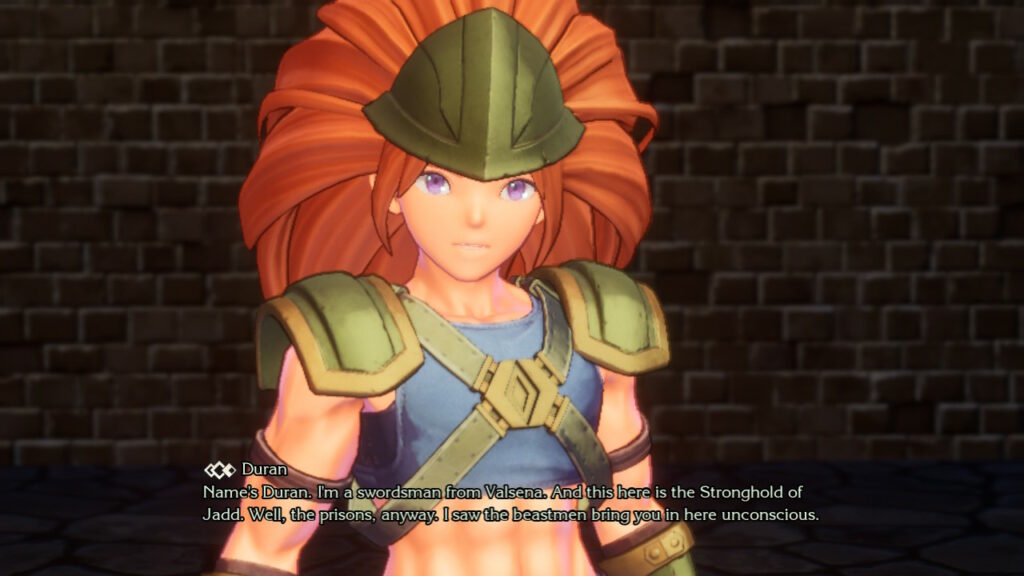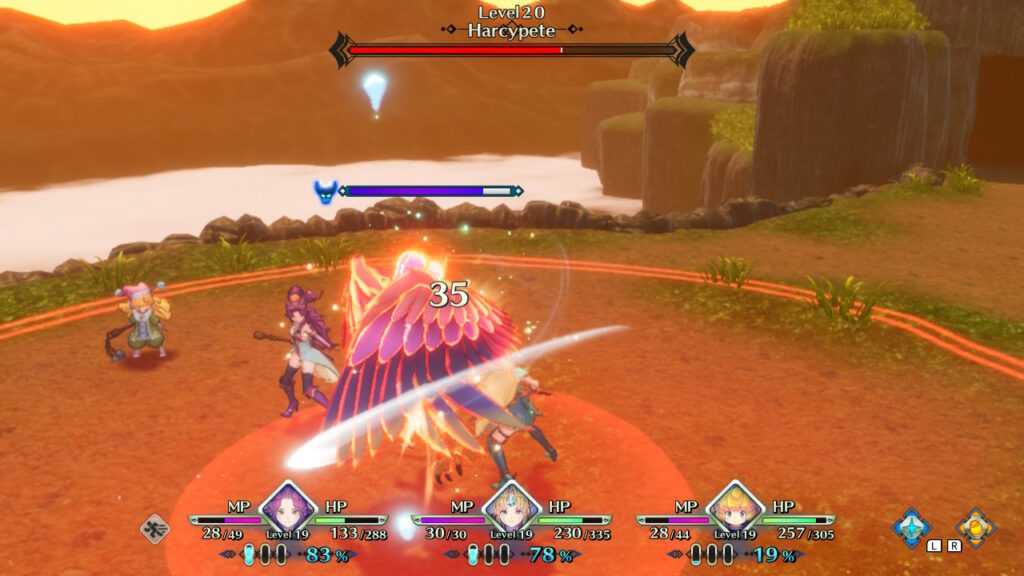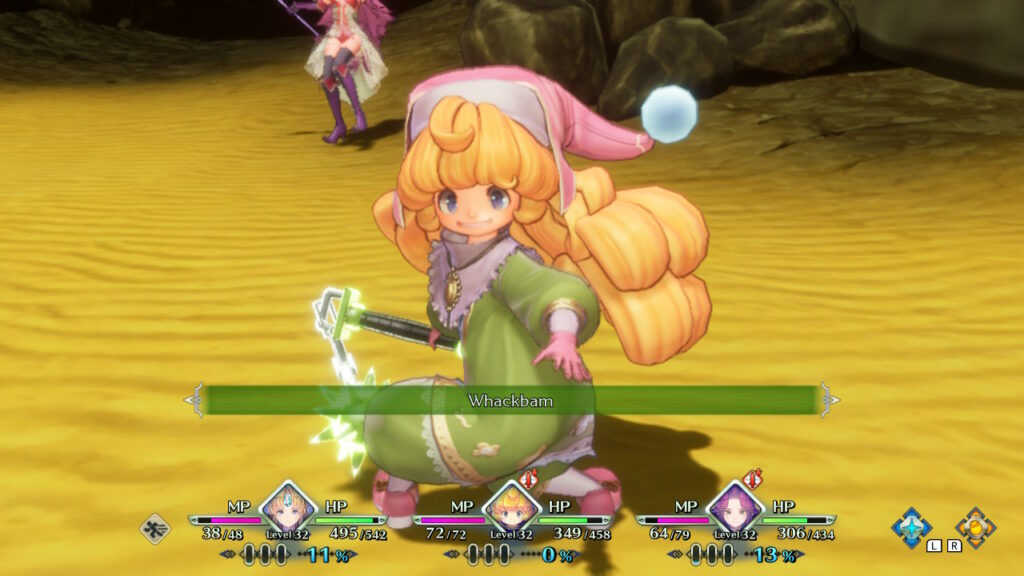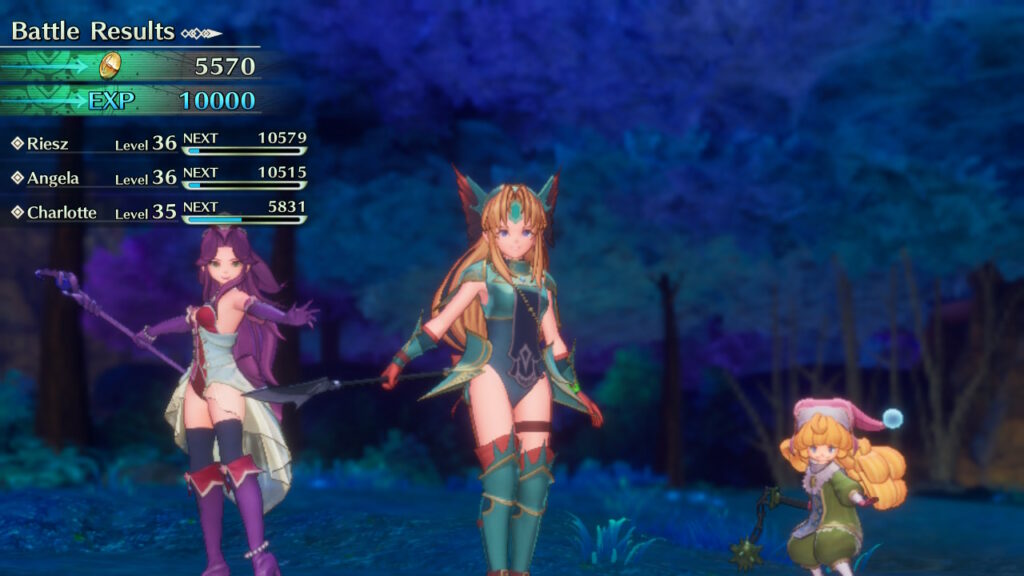
Developer: Square Enix
Publisher: Square Enix
Platform: Switch, PS4, PC
Tested on: Switch
Trials of Mana – Review
With Trials of Mana, Square Enix brings a bit of video game history into the 21st century. Debuting as a Japan-only title way back in 1995, on the Super Famicom, the original version of the game was re-released as part of the Collection of Mana just last year. Now, Trials of Mana reaches gamers again, albeit in a whole new form.
Story
A short introductory scene recaps a couple of core concepts of the Mana series. As we see some beautifully rendered shots of the Mana Tree and the Sword of Mana, the accompanying text gives a quick summary of how the Mana Tree serves as a magical source of life for the world. As is the case in every game in the series, dark forces threaten the existence of the Mana Tree. This introduction brings newcomers up to speed with what the world is all about but thankfully for veterans of the series, it doesn’t drag on for too long. As for the main story, it’s pretty standard stuff by today’s standards, and perhaps even a bit cliché: your party is tasked with saving the world by traveling through a series of diverse environments and dungeons as you collect the eight elementals needed to defeat the dark forces that threaten Mana. The threat to the Mana Tree serves as the overarching story but the game is set up in an interesting -and at the time of the original release revolutionary- way. Trials of Mana features six protagonists, and each has their own backstory and motivation on how they fit into the overarching main story.
As the player, you choose one character to serve as your protagonist, and two others that will become your companions during the story. You start out the game from the point of view of your chosen protagonist, allowing you to discover how they become involved in the quest to save the Mana Tree. Early on in the game, you’ll run into your chosen companions and when you do, you get the chance to play through their backstory as well, in order to learn their motivation -though any experience or items you gain during these flashbacks aren’t kept when you return to the main story. You’ll run into the other protagonists at key points in the main story as well, though these interactions are limited. It’s an interesting choice that rewards multiple playthroughs with different parties.
Graphics
When you look at the colorful graphics and character designs of Trials of Mana, it’s hard to imagine that the series started out as the sibling of the Final Fantasy series (up to the point where both series feature Chocobos). Trials of Mana looks way more cartoonish than the recent Final Fantasy outings, but that doesn’t mean it looks bad. Instead, the remake strikes a perfect balance between the sprite designs from the original game and what one would expect an anime-inspired fantasy RPG in 2020 to look like. The updated designs really bring the characters to life and we couldn’t help but crack a smile when we saw the plethora of enemies come to life in a whole new manner. Environments are detailed and feel much more expanded than they actually are. Additionally, the game doesn’t just look good but it flows nicely as well. The game manages to run at a smooth framerate even when there’s a lot of action on screen and has been optimized to look good both in docked and handheld mode.
Sound
Unfortunately, the sound design isn’t as wonderfully executed as the graphics are. The game attempts to stick close to the original soundtrack, resulting in music that sounds only slightly better than MIDI sounds. It’s a shame that the music wasn’t reorchestrated, especially since the option to play the actual original soundtrack exists as well. The difference between the modern soundtrack and the original is so minor that one wonders why they bothered in the first place. Limited voice acting is present as well. The English voice cast does a serviceable job, although certain characters -especially Charlotte- can really get grating. Switching to Japanese voice tracks is the better option here, although Charlotte’s voice remains a bit of a nuisance.
Gameplay
When the first three Mana outings were re-released as Collection of Mana last year, it was the first official appearance of Trials of Mana outside of Japan. We were suitably impressed with how the old RPG stood up to the test of time, but how wrong we were. The remake of Trials of Mana is a fantastic RPG that sticks close to the original but improves upon its predecessor in every way. Trials of Mana is presented here as a full 3D RPG with real-time combat instead of the 2D version that we saw last year. You control a squad of three heroes as you travel the world, gathering the elementals as you fight enemies and bosses, gain experience and build towards defeating the game’s big bad. Square Enix managed to flesh out the game far beyond the 10 hours of the original release. A single playthrough of Trials of Mana will take you between 25 and 30 hours which is relatively short compared to titles like the Xenoblade or Final Fantasy games, but still enough to keep you occupied for a while.
The game owes a lot to the original in just how minimalistic it is compared to most modern RPGs. Because it sticks so close to the core concepts, it never becomes overcomplicated in its combat system or in improving your party. The real-time battles are simple affairs: when you get close to an enemy, combat starts. You can attack using basic moves, using the A button for fast attacks and the B button for heavy attacks, and they can be chained together for combos. You can spend mana points to use a special attack or magic powers instead. As you fight, you will build up energy, which can then be unleashed to perform a special move. During combat, you will automatically focus your attacks on the nearest enemy, and you’ll be able to see their name, level and HP meter while you’re fighting them. It’s a fast-paced, no-nonsense approach to fighting and most of all, it’s fun.
As characters level up, they’ll earn points which you can spend to unlock abilities, stat improvements and special moves. Gear can also be improved by purchasing better equipment at a merchant. The no-nonsense approach applies here as well: better gear is simply better, there’s no “this armor will improve your defense but lower your attack” parameters to keep in mind. This approach is refreshing in its simplicity. The game will also tell you where to go at all times, with a handy star marking your mini-map. You can turn this feature off if you want to, in order to make the game slightly more difficult.
Two things you should be aware of before you dive into the game, these are the difficulty level and the lack of side quests. If you’re an RPG veteran, you might find that the game isn’t very challenging, although it’s a fantastic entry point into the world of RPGs as it never feels overwhelming. The lack of side quests makes the game feel quite linear, as your only real side objective is to find all 50 hiding spots for Li’l Cactus, an anthropomorphic cactus.
Conclusion
A modern take on an RPG classic, the 2020 version of Trials of Mana is the definitive edition of the third chapter of the Mana series. The game looks beautiful and the elegant, no-nonsense combat system makes Trials of Mana a title definitely worth checking out. RPG veterans might find the title a bit light on its feet, but if you’ve been wanting to give the genre a try, we couldn’t think of a better title to get stuck in.
Trials of Mana - Review,2 Comments
Leave a Reply
You must be logged in to post a comment.










[…] staying true to the spirit of the original release, but as Square Enix proved with the fantastic Trials of Mana, it’s perfectly possible to bring a classic RPG back in such a way that it sticks close to […]
[…] development studio features a group of renowned names with previous experience in other RPGs like Trials of Mana or Octopath […]